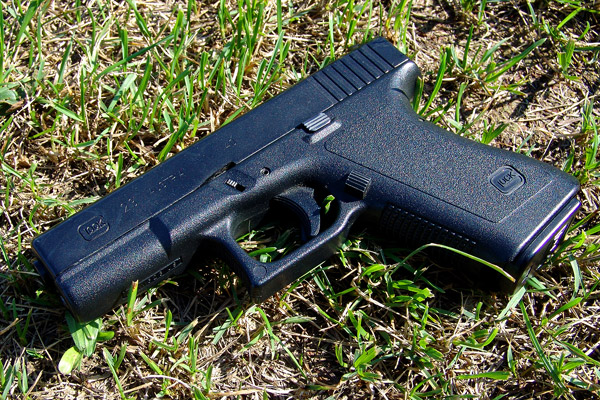
The folks at the Tribune Web apps team put together a nice visualization of the path of an illicit gun sale: how forty-some guns came west from Indiana—via a couple McDonald's parking lots—and into the city, to accompany a piece by Annie Sweeney and Jason Meisner. (For more on how this works, see David Bernstein's 2004 Chicago piece, "Biography of a Gun.")
The path is interesting, but so are the prices. There's no information on the original price of the guns as sold by Individual A, the original Indiana gun seller, but by the time they make it to Chicago, we get some numbers: first, $2,300 for three .45-caliber Glock pistols sold to a government agent on the 6800 block of South Langley Avenue. That's about $770 per gun. The article doesn't say whether the guns are new or used, but a brand-new .45 Glock at Cabela's is $650.
Of course, that's if you're paying retail. You can save $100 at GlockStore.com, and another hundred by going used, if not more. $770 represents a big markup, anywhere from 15 to 100 percent depending on how you figure it.
The informant then bought four more guns: two FNH 5.7×28 guns ("a 20-round pistol that fires a 5.7mm bullet that will defeat most body armor"), another .45 Glock, and a Velocity Firearms 9mm pistol. The last of these is an intimidating-looking gun in the MAC-10 family, but comparatively inexpensive, in the $350-$400 range. The FNH is considerably more expensive, over $1000—but those four went for $5,300 a piece, or $1,325 per gun. Again, a big markup on the black market.
Which turns out to be pretty typical. In 2007, four academics—Philip J. Cook of Duke, Jens Ludwig of the University of Chicago, Sudhir Venkatesh (now of Columbia) and Anthony Braga (now of Rutgers)—studied Chicago's underground gun market and found that "the illegality of the gun market increases search costs for prospective trading partners" (PDF):
Interviews by SV with 116 gun-owning non-gang affiliated youths (age 18–21) reveal prices paid that range between $250 and $400. Interviews with 11 local gun brokers, who handle a large share of retail transactions on behalf of importers, suggest most of their guns are sold for between $150 and $350. These prices are typically for guns of low quality, manufactured by companies such as Lorcin, Raven and Bryco. These names were often mentioned to SV in interviews and as noted above also show up frequently in administrative data on confiscated crime guns maintained by ATF. While SV’s inter- views do not include information on the condition of the gun, it is noteworthy that most pistols from these manufacturers listed on websites (such as gunsamerica.com) sell for between $50 and $100 (with a $10 mailing/transaction fee), even for those used guns that are reported to be in 'excellent condition'.
Of course, people are still able to obtain guns; they're just expensive and more difficult to find.
But one part of their research made me wonder how much the repeal of the gun ban will actually effect the black market here:
Why do people tolerate these search costs when any Chicago resident can identify the location of numerous licensed suburban gun dealers with a quick search of the local phone directory or the Internet? Even those people who are themselves ineligible to buy a gun from a licensed gun dealer can get someone else, usually a wife or girlfriend, to make a 'straw purchase' on their behalf if she obtained an Illinois Firearm Owners ID (FOID) card. The answer seems to be in part that the residents of SV’s neighbourhoods are very parochial, perhaps because gang turf increases the risks of travelling to other areas. One gang leader notes:
'Most of us, we never been outside these four or five blocks, our neighbourhood. Now, how can you bring the guns here if you don’t even know how to get to other places? … Even if we go to jail, we really spend most of our time around where we live, where we work.'
In that sense, the weapons that enforce that isolation maintain their own, isolated black market.
Photograph: MIKI Yoshihito (´・ω・) (CC by 2.0)


